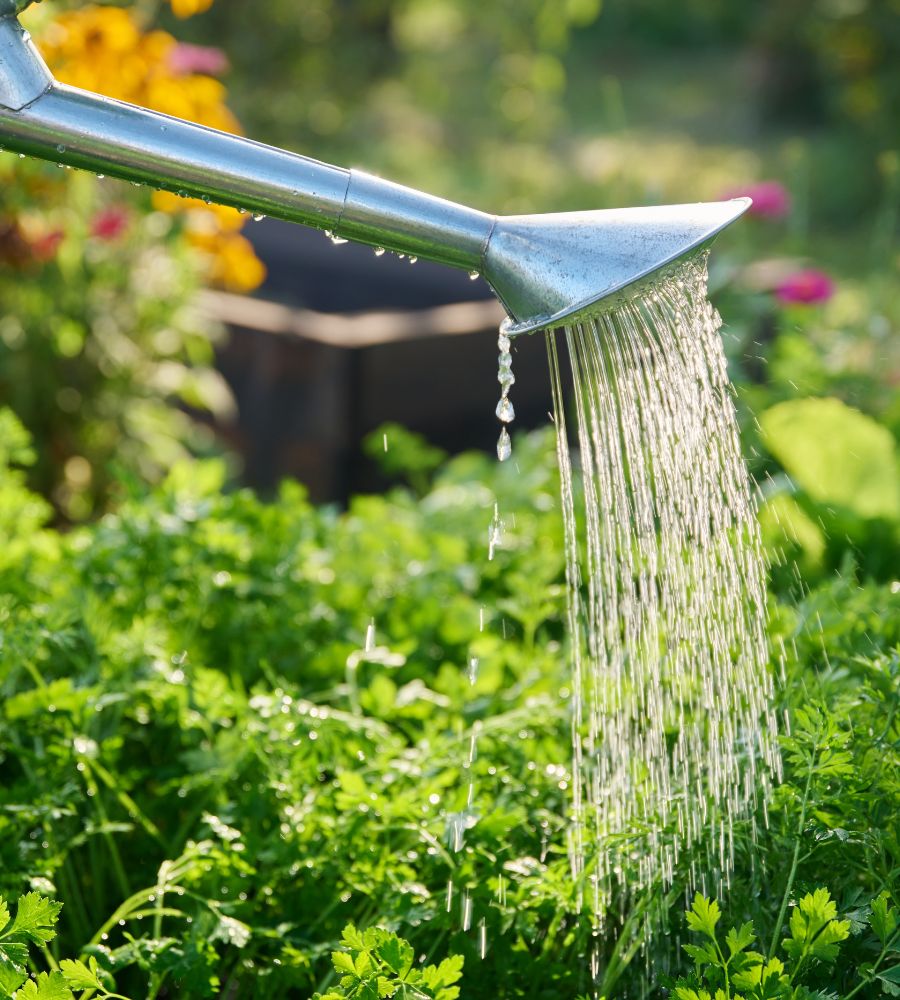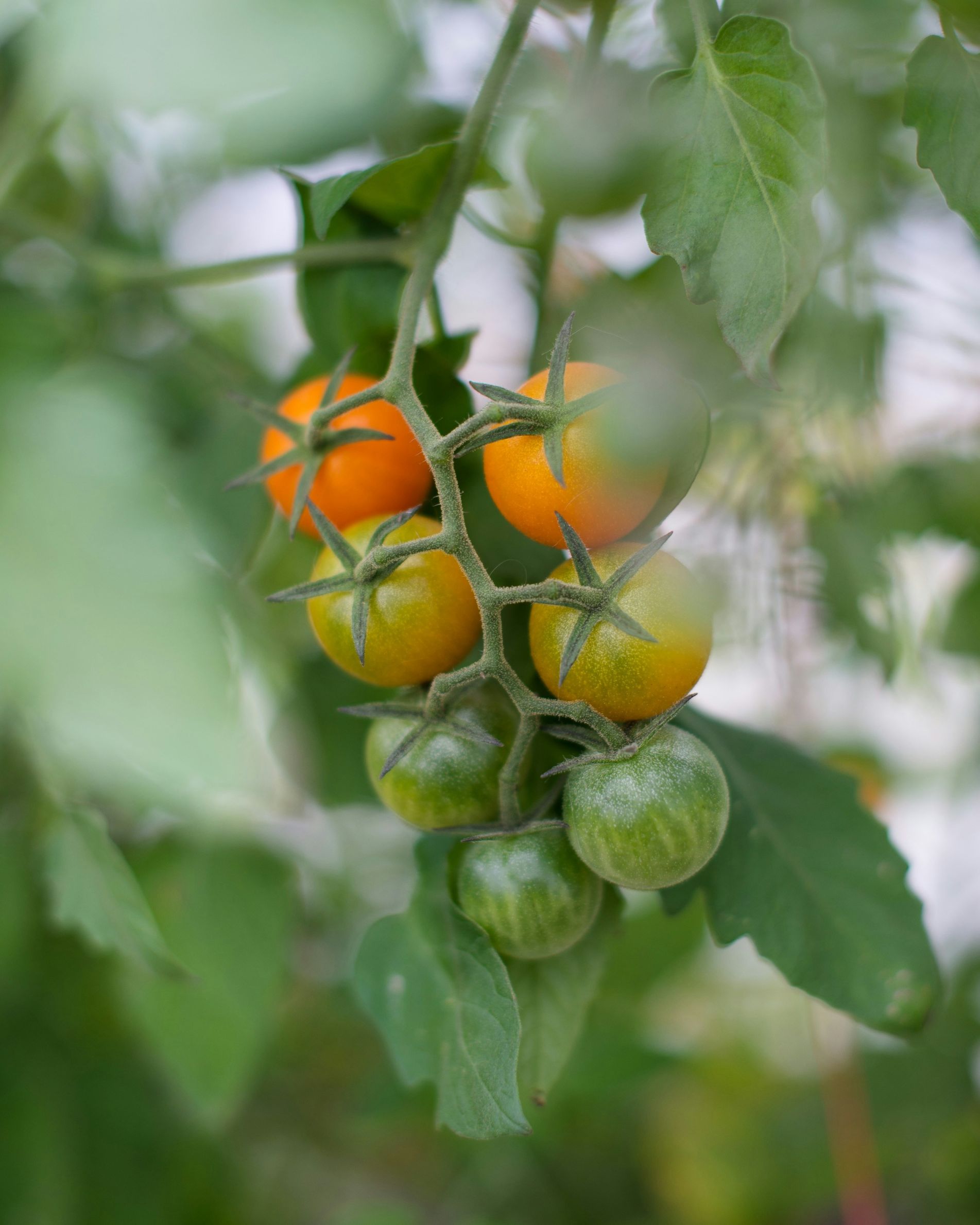
Eleanor Clarke
OUTDOOR GARDENING
How to Grow Carrots
Coming in at number 4, on the RHS most popular veg list are carrots. We all love a crisp, sweet carrot. They’re as good raw and dipped in a pot of houmous or aioli as they are steamed or roasted and served with a classic Sunday roast. Growing them in the garden or on an allotment presents a hurdle or two, especially on London clay, but it’s nothing that can’t be cleared with a little knowledge and forewarning – and once you know what you’re doing, they’re quick to crop
There’s plenty of variety within the carrot family, from classic orange roots to round, white or purple ones. There are also some brilliant shorter varieties such as ‘Carson’ and ‘Parmex’, which are well suited to growing in containers or on heavier soil. Quick-maturing early varieties such as ‘Adelaide’ are great for kicking off the season, then sow maincrop varieties like ‘Bangor’ or ‘Flyaway’ until the end of summer.
When to plant
Sow directly outside anytime from early spring to late summer, in batches, and you’ll have carrots for around six months of the year
Where to plant
London clay soil isn’t great for growing carrots. Because it’s so heavy, the roots find it hard to grow, so you’ll need to dig in plenty of organic matter, such as leaf mould, compost and sharp sand. You’ll also need to remove any stones – too many and you’ll end up with crooked, small or forked carrots.
Because carrots mature from seed to harvestable root relatively quickly – sometimes literally a few weeks after sowing –they make what we call a great ‘catch crop’. This means they’re ideal for popping in between crops that take longer to grow, using up the available soil space while the others are growing more slowly. Practically speaking, this is great if you have a small urban garden where space is limited, as you can grow your carrots in between rows of onions, garlic or sweetcorn.
Another great idea for carrots is to grow them in deep pots or sandy compost. Wherever you grow them, they’ll need full sun, and sow seeds directly into the soil, in drills about 2cm deep.
Thin them out
Once you can see your little rows of fine, filigreed foliage,10-15cm tall, you’ll probably need to thin them out to give the carrots room to bulk out. To avoid attracting carrot fly, do this in the evening. Give your carrots a good watering first, then thin to 6-7cm apart, taking out the spindliest seedlings.
Water
Keep them lightly watered. They’re pretty drought-resistant plants, but if it’s too dry for too long, carrots can become tough to eat. If you’re growing your carrots in pots, they’ll need more regular watering.

Protect your carrots
Carrot fly can be a big problem. As soon as they smell your carrots (when you’re thinning them out or even just touching the leaves), they’ll descend, and can ruin a crop overnight. However, they’re badly designed insects and can only fly up to 60cm, which is where tall pots and raised beds come in handy. If you don’t have either, you could surround your carrots with an insect-proof mesh or cover them with horticultural fleece to keep them out.
Dig them up
Most carrots are ready to eat between 12 and 16 weeks after sowing. Don’t leave them in the ground too long or you’ll end up sacrificing flavour for size. And take care when digging them out to avoid breaking them. You can leave late-sown carrots in the ground all winter if you like, but do cover them with cardboard or straw to protect them from freezing.
Common Problems:
1. Where are my seedlings?
Snails and slugs can quickly mow down newly emerging seedlings. Two of the best ways to keep this from happening is by setting beer traps nearby, or by going out with a torch in the evening and picking off the snails and slugs.
2. My carrots are full of holes
This will be the larvae of carrot fly (see above). Next time, try sowing varieties less susceptible to carrot fly, eg ‘Sytan’, ‘Resistafly’ or ‘Maestro’. Or try to sow seeds incredibly thinly, thus skipping the thinning stage, which is usually when carrot fly sniff out your crop.
3. The tops are green
This isn’t really much to worry about – you can still eat your carrots. It’s something that happens when they’re exposed to sunlight. If you notice carrot tops showing above the soil, just cover them with a thin layer of soil.
4. They’re a weird shape
Your soil is probably a bit stony and/or heavy. Dig it over more thoroughly next time and add more sharp sand/compost. Or grow your carrots in pots
Remember, if we don’t have specific plants in stock, just come and ask one of the team. We’ll be happy to suggest an alternative or order it for you, if we can.


